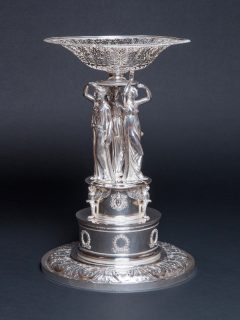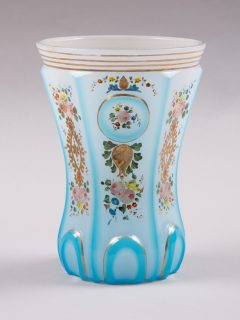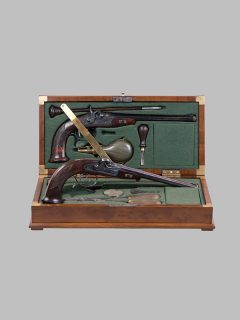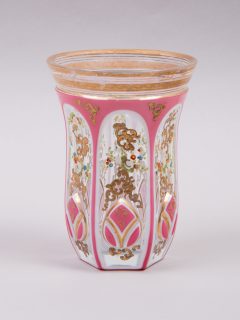Silver Riding Prize with Franz Joseph I on Horseback
Manufacturer: Josef Carl Klinkosch
Date: Vienna, circa 1908
Material: Sculpture made of 800 silver (Diana head punch, master mark “KLINKOSCH”, double-headed eagle punch for court suppliers), base made of stained oak
Dimensions: H 31 x L 21 x W 11 cm
Inscription: Front plaque: “OFFICERS’ RIDING ASSOCIATION / DISTANCE RIDING 1908” (translated); rear plaque: “TO THE LIEUTENANT / IN THE IMPERIAL AND ROYAL 8TH HUSSAR REGIMENT / GEZA VON CSALÁNYI / CZEGLÉD – CZEGLÉD / 152 Km. BAKKANCS. 30/VI.” (translated)
Description: Finely crafted silver sculpture of Emperor Franz Joseph I in full attire on horseback, mounted on a simple stained oak base with two silver plaques (front and back)
The 8th Hussar Regiment, originally known as the Deak Hussars, was founded in 1696 as part of the Imperial Army. It was the second oldest hussar regiment in the Imperial and Royal Army and existed for almost 220 years. Throughout its history, it received various designations, including Cavalry Regiment No. 30 (1769) and finally Hussar Regiment No. 8 (1798). From 1902 to 1912 Prince Alois Esterházy von Galántha was the owner of the regiment, which served in the Austro-Hungarian Army until World War I. In 1915, the regiment was disbanded due to heavy losses in the fights against Russia. The remnants of the regiment were merged with other cavalry units to form the newly established Cavalry Rifle Regiment No. 9.
Géza von Csalányi was a lieutenant in the second division of the 8th Imperial and Royal Hussar Regiment, which had been stationed in Czegléd since 1904. (Source: Schematismus für das k. u. k. Heer und für die k. u. k. Kriegsmarine 1908, p. 764f.)
Further Information and additional images upon request







